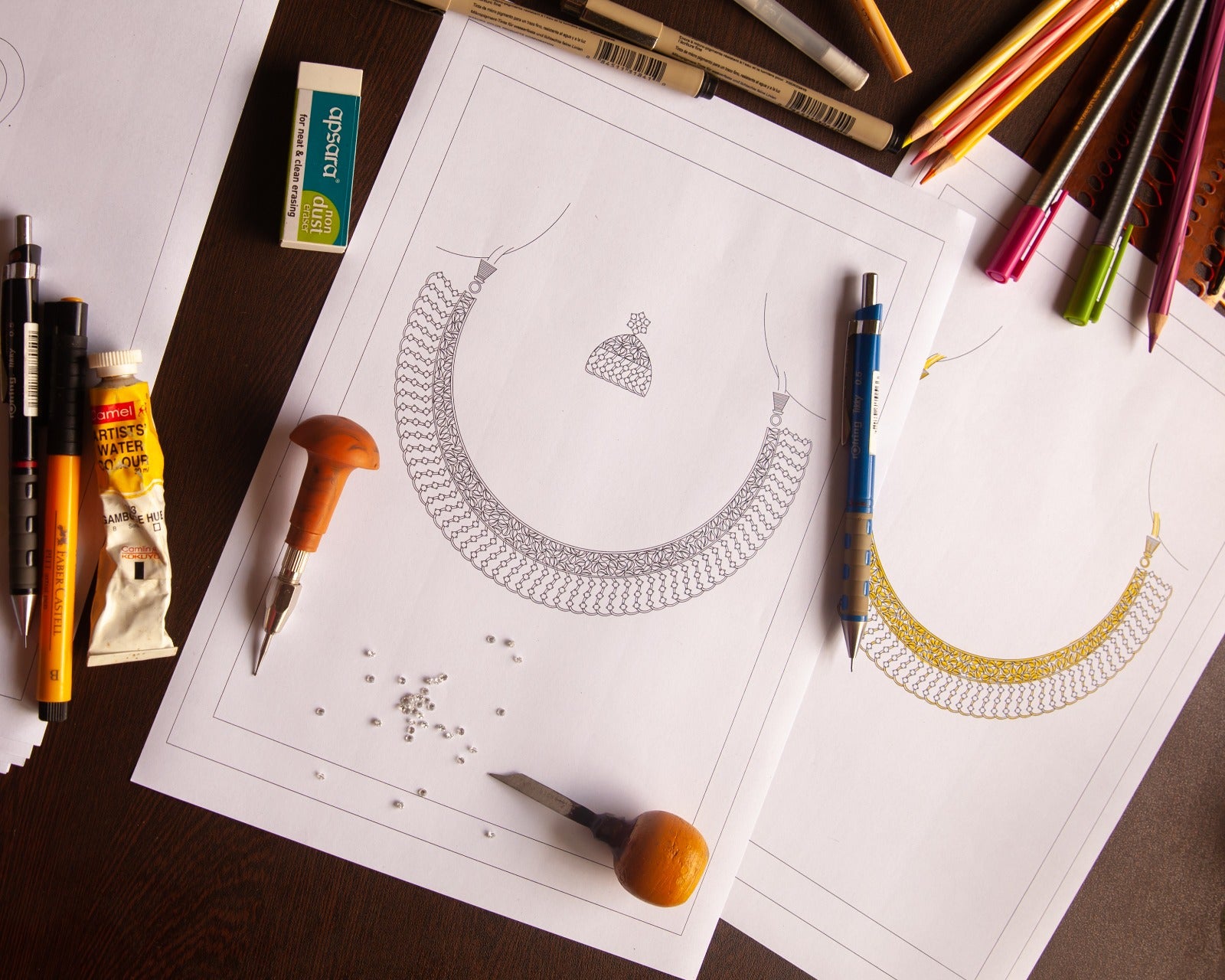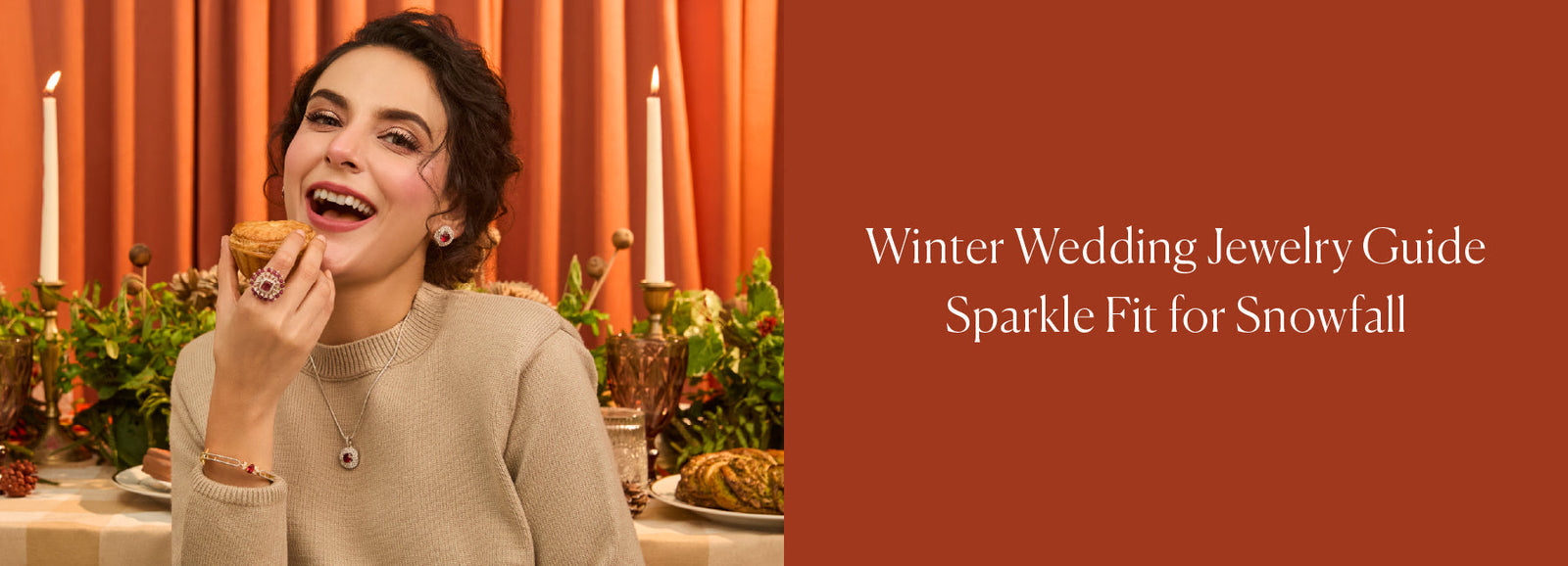Crafting beautiful jewelry is as much a science as it is an art. At Tarinika, we pay attention to each and every step, right from concept to finish; ensuring that only the most beautiful, high-quality, and unique piece of jewelry reaches you. To understand the process that each piece of jewelry goes through, do read how Tarinika crafts its fine jewelry for you.
Conceptualizing
To craft a piece that's unique in necklace design, the first step comprises of conceptualizing. A team of 8-10 creative designers work on creating new jewelry concepts. Each idea is then evaluated to understand the result, and finally, the best designs are shortlisted. A lot of emphasis is placed on trend forecasting so that designers can create unique ideas for jewelry. A keen eye for detail and an understanding of the consumer psyche plays a key role here. This stage of design also includes detailed jewelry sketches and technical drawings.

Computerizing
The advent of technology has enabled better translation of ideas to finish. At this stage, the design drawn on paper is put on to computer systems with Computer-Aided Design technology. The software not only calculates dimensional accuracy of the piece now, but it also helps craft intricate and accurate designs. With the CAD file in place, the designer next uses a 3D Rapid Prototype system to create a fully functional resin model.

Modeling
The resin model is further used to create a metal model, which will then work as a master design. It will also be used to create a rubber mold for future pieces. To craft a piece, molten wax is pressure injected into the mold cavity. The wax models thus created are used for casting. These pieces are soldered on a wax stem to create a wax tree. At this step, small CZ stones are also set in the wax.
Casting
Our team now arrives to the step of casting. This is a complex process that requires a high level of skill. Experienced casters place the wax tree in a steel flask. Chemical is added into it, and the flask is heated in a furnace. The wax now melts, leaving behind a tree cavity. Molten metal is poured into the flask, and allowed to cool. At the end, the tree is demolished, revealing the piece of jewelry.

Grinding & filing
The raw cut now goes to the polisher, who grinds away to get a smooth surface. At this stage, polishing is done on a spinning wheel to obtain a gleaming smooth surface. Filing is the next step and it involves removing the excess metal or solder from the piece of jewelry. A range of tools are used to give a smooth finish. At this stage, independent components if any are joined together using a solder or laser.
Polishing
The next step involves polishing the jewelry for a neat finish. Using a series of steps that are different for jewelry with stones and without, polishing is taken up. Once an initial polishing is done, stone setting takes place and can include prong, pressure, buff, and other setting styles. A final polish gives jewelry a better shine and may be done by hand or by a machine. Hand polishing makes use of different tools to impart shine and white luster and remove roughness if any.
Rhodium plating and enamel
After the jewelry is polished, rhodium plating is done. Rhodium is a sparkling white precious metal that is often layered on jewelry. With rhodium plating, your jewelry acquires a white reflective surface and has better resistance to scratches and tarnishing. Appealing earrings designs can also be created on jewelry. The complete piece of jewelry then goes for enamel, where the metal is painted with a resin-based material.

Quality check
Before a product is considered ready for shipment, it has to undergo a thorough check for quality. Quality control (QC) procedure is followed to ensure that every manufactured piece of jewelry adheres to the set quality parameters. It is also seen whether the product meets the requirements of the customer. This is done by measuring, conducting a visual assessment, and finally a mechanical inspection.

With each and every step carefully thought out, work at Tarinika goes like clockwork, to ensure that our customers only get the best inline quality, design, and prices. This craft process enables us to make the finest designs, and ensure that you get them at the best prices too.




